On October 23, Hungarians marked the 60th anniversary of the ill-fated revolution that ended with the re-imposition of Communist rule and the flight of some 200,000 Hungarians to Western Europe and the United States. It remains a somber anniversary of heroism in defeat that continues to resonate with Hungarians across the globe.
From Khrushchev’s denunciation of Stalin to the Suez Crisis, 1956 was a year of momentous changes and crises in the Cold War world. Yet no other event that year was as dramatic as the Hungarian Revolution—a bold but ultimately unsuccessful uprising that nearly expelled Soviet forces from Hungary in late October.
The unprecedented popular revolt briefly upended the postwar order in Europe and deeply disturbed Soviet leaders who felt their control over the so-called people’s democracies was in jeopardy. Though the Kremlin suppressed the revolution mercilessly after dithering for several days, the crisis in Hungary dealt a serious blow to the Soviet Union’s credibility that was difficult to repair.
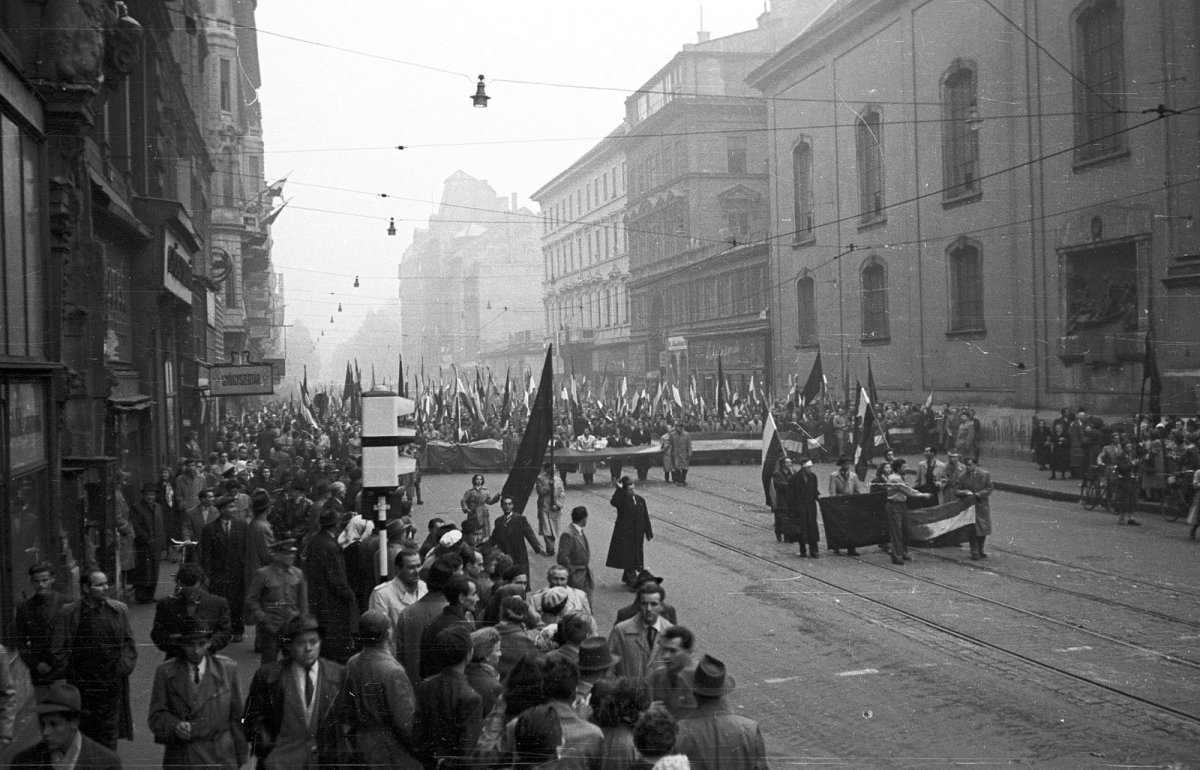
Hungarian protesters march in Budapest on October 25, 1956. (FOTO:FORTEPAN / Nagy Gyula)
What began as a series of peaceful student demonstrations on October 23, 1956 quickly escalated into an armed insurrection in Budapest and across Hungary. Emboldened by similar protests in Poland, Hungarian students issued a list of demands known as the “Sixteen Points,” including economic reforms, the removal of Mátyás Rákosi and other Hungarian Stalinists, and the withdrawal of the Soviet military, which had been stationed in Hungary since 1944.
Since his Hungarian Communist Party took power in 1948, Rákosi had presided over an increasingly oppressive regime that had brought the resentment of many Hungarians to a boiling point. Demonstrators on Parliament Square called on the reform-minded Communist Imre Nagy to resume his post as prime minister, an offer that he reluctantly accepted in hopes of steering the movement towards a peaceful outcome.
When crowds of unarmed civilians were gunned down on that same square on October 25, however, the revolution descended into all-out war between ragtag groups of armed rebels and Soviet troops supported by Hungarian security forces.
Red Army soldiers and other emblems of Soviet repression were among the first targets. Protestors tore down a towering statue of Stalin near Heroes’ Square, leaving behind only his boots, and dragged his metal carcass through the city center before symbolically decapitating it. Soviet red stars were removed from buildings and Russian stores were vandalized with the slogan “Ruszkik haza!” (Russians, go home!).
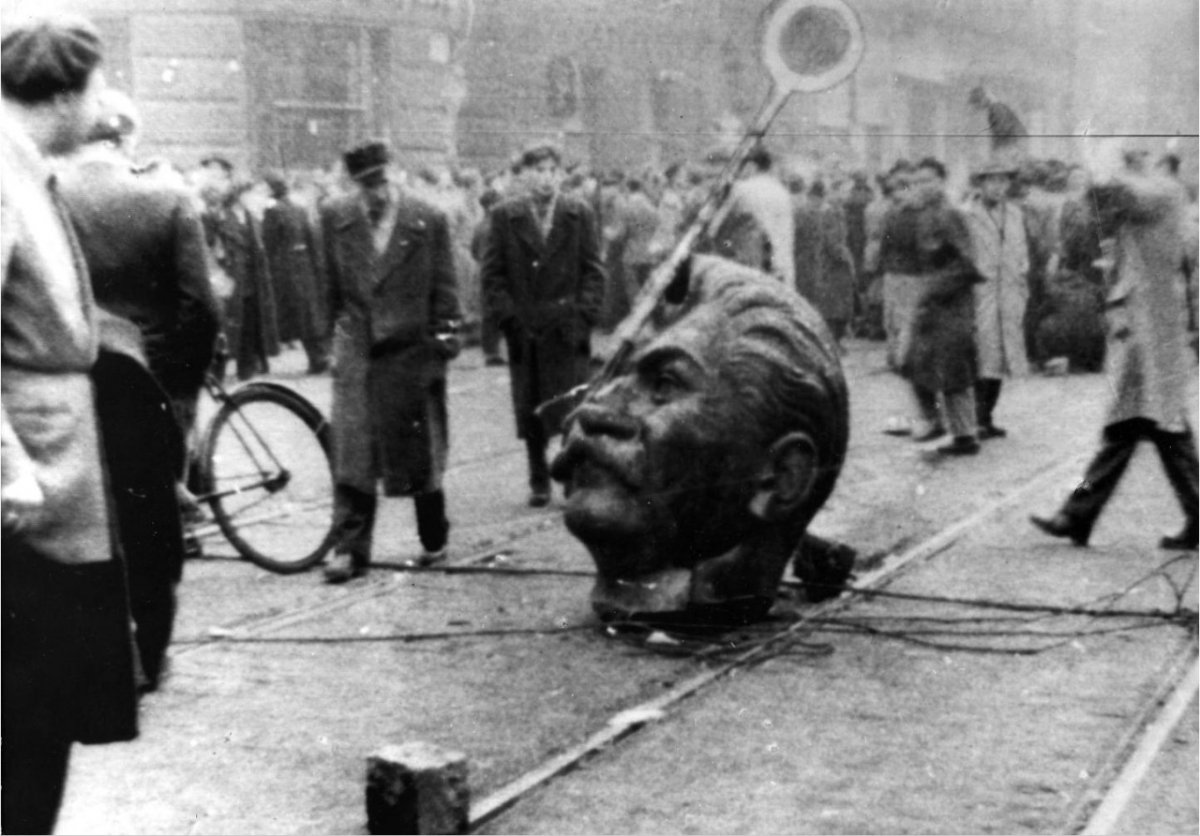
Stalin's severed head in a Budapest street.
Once demonstrators began cutting out the Soviet emblem from the center of the Hungarian tricolor flag, it instantly became the new revolutionary banner. Hungarians associated with Hungary’s postwar Communist regime were also beaten and executed publicly. Although many condemned such violent acts, resistance fighters’ reprisals against officers of Hungary’s detested state security (ÁVH) added to the brutality unfolding on the streets of Budapest.
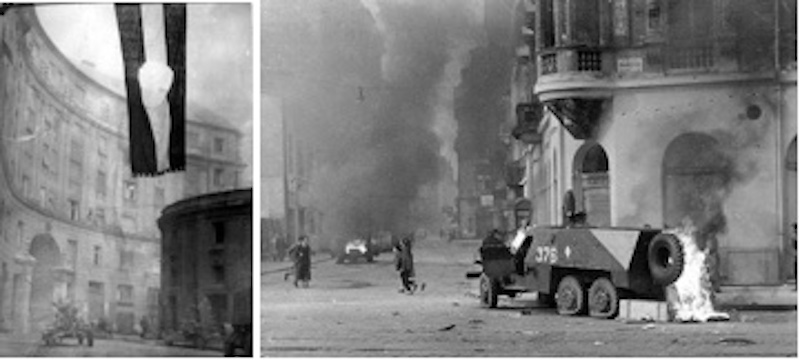
Revolutionary flag of 1956 near the rebel's stronghold at the Corvin Cinema (left) and a burning Soviet armored car (right).
Poorly equipped but highly mobile fighters armed with rifles and Molotov cocktails proved remarkably effective at knocking out Soviet tanks and repelling assaults at fortified intersections. Young men and women with no real military training often formed the bulk of these units that outmaneuvered the Red Army. Meanwhile, Hungarian-language broadcasts on Radio Free Europe exhorted rebels to carry on fighting, raising people’s hopes that American aid was imminent. Throughout the entire ordeal, however, President Dwight D. Eisenhower’s administration issued only halfhearted statements of solidarity. Alarmed by the Suez crisis in Egypt and eager to avoid armed confrontation with the Soviet Union, the United States remained on the sidelines.
Initially, the revolt succeeded. The atmosphere was euphoric in Budapest as Soviet forces began to withdraw after a ceasefire was declared on October 28. Against impossible odds, it appeared that ordinary Hungarians had managed to defeat the mighty Red Army and free themselves from Soviet domination. Images of jubilant plainclothes civilians holding weapons and posing for pictures atop captured tanks stunned the world.
Yet even as Soviet forces retreated, victory was short-lived for Hungarians. A few days later, Khrushchev’s inner circle decided to restore order in Budapest with brute force, lest Hungary become the first Soviet satellite state to reject Moscow’s authority in East-Central Europe.
On November 4 Soviet troops launched Operation Whirlwind, returning with reinforcements to crush the rebellion and install János Kádár as the new prime minister. Using both deception and overwhelming firepower, Soviet forces arrested the leaders of the stillborn revolutionary government and eliminated the last pockets of resistance within a week.
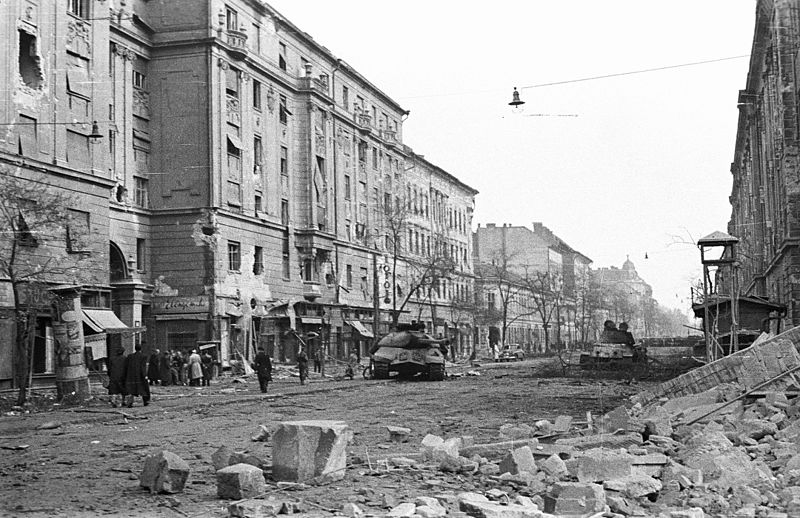
Imre Nagy and other top-ranking Hungarian officials who had sympathized with the revolution were swiftly tried and executed in June 1958. It was a gruesome end to a bloody rebellion that claimed the lives of 2,600 Hungarians and triggered a mass exodus of civilians seeking refuge in the West.
Today, 1956 serves as a symbol of martyrdom that continues to haunt Hungarian society. Like the failed 1848-49 revolt against the Austrian Empire and the Treaty of Trianon in 1920 that divided the Kingdom of Hungary after the First World War, 1956 remains an open wound that features prominently in Hungary’s urban landscapes. Memorial plaques, statues, and even pockmarked buildings mark the areas where the fiercest fighting took place in Budapest. Every year on October 23rd, the iconic Hungarian flags with hollow circles adorn streets across the country.

Numerous sites of memory—including a 1956 monument where Stalin’s statue once stood, a subterranean memorial to the October 25 massacre victims on Kossuth Square near a statue of Imre Nagy, and Budapest’s House of Terror museum—evoke the trauma of that fateful year when Hungarians rose up defiantly to demand a more humane political system.

Memorial to the 1956 Hungarian Revolution (left) and the House of Terror in Budapest (right).
A peculiar version of this triumphal narrative was on full display during this year’s commemorative ceremony in Budapest. Viktor Orbán, Hungary’s controversial prime minister who has led a xenophobic campaign against refugees since the summer of 2015, used the occasion to reaffirm 1956’s sacred place in national memory while justifying his tough stance on migration.
 |
Speaking from a stage featuring giant portraits of fallen resistance leaders and the slogan “Where heroes are not forgotten there shall always be new ones,” Orbán praised Hungarians’ courage both then and now, reminding the assembled crowd that “the communism believed to be indestructible received a wound from which it could not recover.”
But his speech was muffled by whistles and jeers from opposition protestors whose frustration with Orbán mirrors the opprobrium he has received from abroad. Indeed, many world leaders have criticized Orbán and his center-right party Fidesz for demonizing refugees, noting that Hungary should embrace those fleeing armed conflicts just as Hungarian refugees were welcomed in 1956.
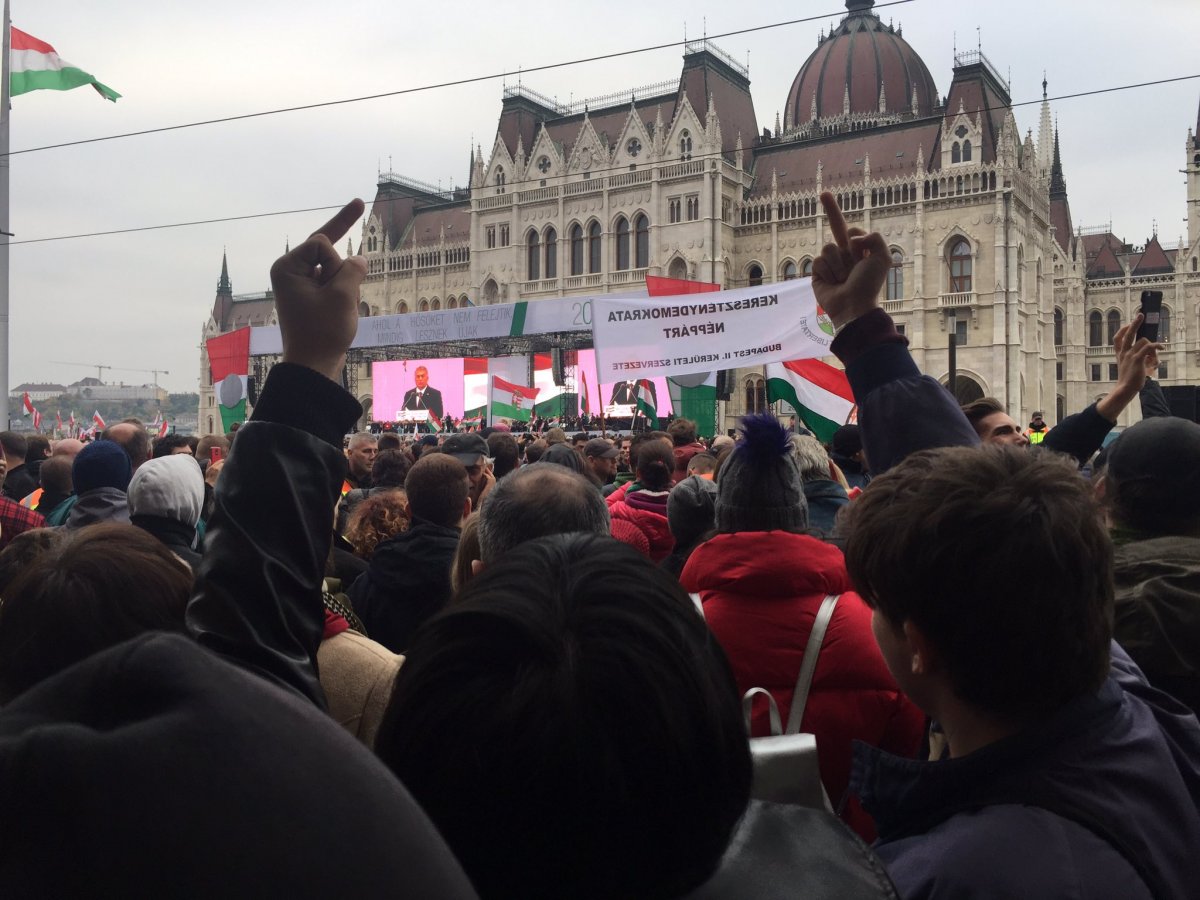
Unfortunately, even after holding a failed referendum on October 2 against the European Union’s proposed refugee quota, Hungary’s ruling party has yet to demonstrate that it will fulfill its obligations as an EU member state. Amidst this controversy, one can only hope that parallels between 1956 and 2016 will prompt Hungarian leaders to remember their own ancestors’ plight sixty years ago and reconsider their commitments in the present.
A rich and voluminous literature on the 1956 Revolution has emerged in recent years. For this article, the author relied on the day-by-day account by the Hungarian journalist Victor Sebestyen, entitled Twelve Days: The Story of the Hungarian Revolution (New York: Vintage Books, 2006).
